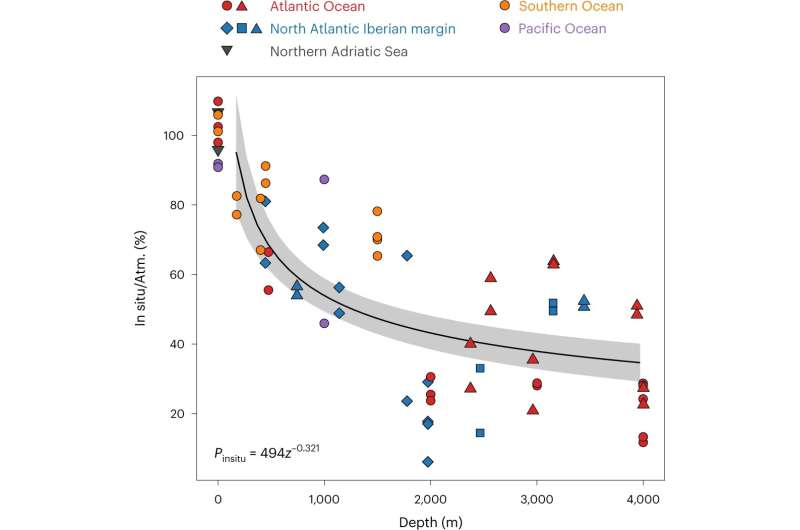December 9, 2022 report
Ocean study shows most deep-water microbes are almost inactive

A team of researchers at the University of Vienna, working with a colleague from the University of Tsukuba, has found that the vast majority of deep-water microbes are mostly inactive. The group describes their long-term study of microbes at great depths in the Atlantic and Pacific oceans and the Mediterranean Sea in the journal Nature Geoscience.
For many years, ocean scientists assumed that the world's oceans were teeming with microbes that would eat anything that happened to die in their waters. And while this has been found to be true, it is not true in the ways that were thought, at least not according to the findings of this new research.
Prior research has suggested that at least some parts of the deep ocean either lack microbes or harbor microbes that do not consume biomatter. A bologna sandwich, for example, found in a sunken submersible with its hatch open, had hardly deteriorated, even after 10 months deep underwater. Clearly the underwater ecosystem is wide and varied, with some areas more conducive to biomolecular breakdown than others.
Such observations led other researchers to suggest that certain types of seaweed could extract carbon from the air, sinking upon death and taking the carbon with it, sequestering it in very deep, cold water. But that does not appear to be likely as new evidence suggests that microbes in the ocean are not the same everywhere.
To learn more about microbes in the deep oceans, the researchers sailed around the world collecting samples—but rather than hoisting them aboard their ship, where they might change due to pressure differences, the researchers used fluorescent probes—microbes with higher respiration rates glowed more, which the researchers used as a form of measurement. They also pulled a few of the different kinds of microbes into their boat to conduct genetic studies.
In looking at their data, the researchers were surprised to find that just 3% of the microbes they studied were converting oxygen to CO2. The rest were mostly inactive, due, the researchers theorized, to the pressure. They also found that greenhouse gas emissions that wind up in the ocean are very unevenly distributed, which suggests attempting to use the oceans to store more CO2 is currently impractical, and perhaps foolhardy. It also shows that ocean scientists still have a very limited understanding of ocean chemistry.
More information: Chie Amano et al, Limited carbon cycling due to high-pressure effects on the deep-sea microbiome, Nature Geoscience (2022). DOI: 10.1038/s41561-022-01081-3
Journal information: Nature Geoscience
© 2022 Science X Network




















